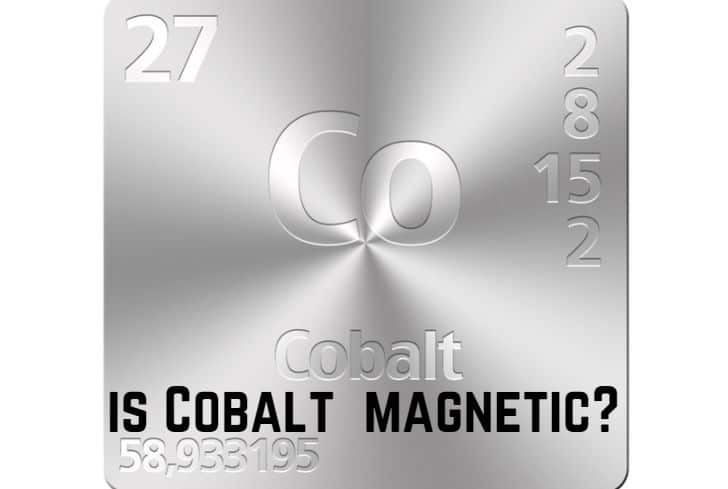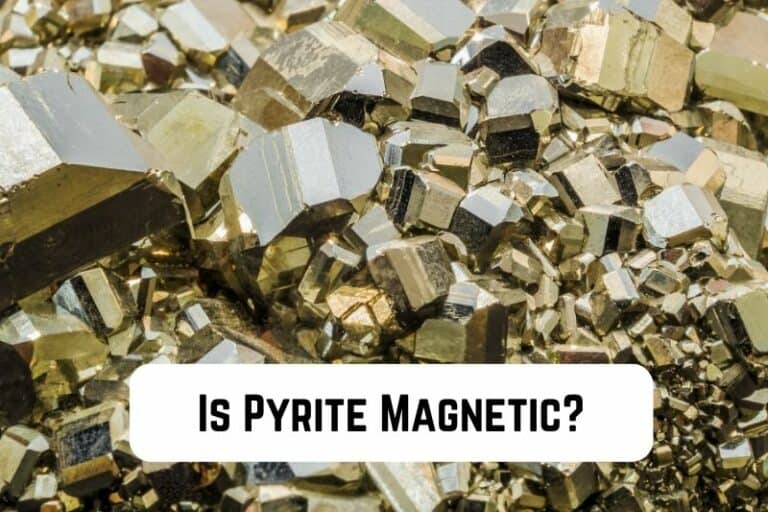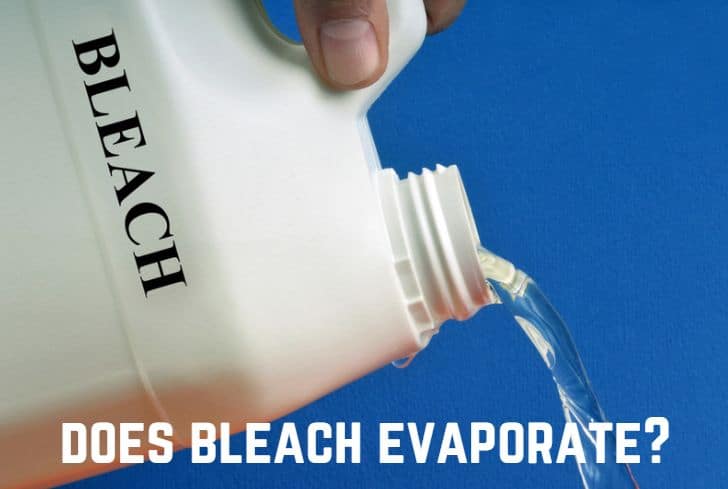Is Cobalt Magnetic? (Yes…)

Cobalt is a chemical element with the atomic number 27. Just like nickel, it is found in Earth’s crust only in chemically combined form, except for small quantities in meteoric iron alloys. Blue pigments based on cobalt (cobalt blue) have been used since antiquity for jewelry and paints.
Have you ever wondered if cobalt is magnetic? In this article, we are going to discuss just that. We will begin with the properties of cobalt. Then we will talk about its magnetic properties in detail, including its susceptibility and permeability. Finally, we will talk about magnetic and non-magnetic metals.
Read: Is Tungsten Magnetic?
Is Cobalt a Magnetic or Non-magnetic Material?
Yes, cobalt is a magnetic material. It is a ferromagnetic material, so it is strongly attracted to magnets. This is because cobalt has unpaired electrons in its outer shell, which spin in the same direction and cause the element to become magnetic.
Let us begin by understanding what magnetism is. Magnetism is a force caused by the motion of electric charges. Every substance is made up of atoms. These atoms have electrons (particles that carry an electric charge) that circle the atom’s centre, called the nucleus.
In most substances, equal numbers of electrons spin in opposite directions. This cancels out their magnetism, and they are not attracted to a magnetic field. These include things like paper, cloth, wood, etc., and they are called diamagnetic.
However, in some substances like iron, the electrons spin in the same direction. This allows their magnetic fields to combine, and it produces a magnetic field extending beyond the atoms. These objects are strongly attracted to magnets and are called ferromagnetic.
Cobalt is one of the four elements (along with iron, nickel, and gadolinium) that are ferromagnetic at room temperature.
Properties and Uses of Cobalt
These are the properties of Cobalt:
- Occurrence & Extraction: The free element of cobalt (obtained by reductive smelting) is a hard, lustrous, silver-grey metal, although it is only found in a chemically combined form in Earth’s crust. Most cobalt is produced as a by-product of copper and nickel mining. Some of it also comes from metallic-lustred ores, such as cobaltite (CoAsS). The Copperbelt of Congo and Namibia are the biggest sources of cobalt.
- Melting and Boiling Points: Cobalt has a melting point of 1495 °C (2723 °F) and a boiling point of 2927 °C (5301 °F). Its curie point is 1,115 °C (2,039 °F), which makes it ideal for high-temperature applications.
- Magnetism: Cobalt’s electronic configuration is [Ar] 3d7 4s2. So, it has three unpaired electrons. These electrons spin in the same direction and amplify their magnetic fields, which leads to the whole element becoming magnetic. Therefore, cobalt is a ferromagnetic metal that is strongly attracted to magnets.
- Chemical Properties: Cobalt is a weakly reducing metal and it is protected by oxidation by a passivating oxide film. It is stable in the air and does not react with water. In ordinary temperatures, cobalt reacts slowly with mineral acids. Cobalt does not react directly with hydrogen or nitrogen, although it combines with carbon, phosphorous, and sulphur on heating.
- Biological Significance: Cobalt is a significant trace element that is essential for animals like cattle and sheep. It is also necessary for the maturation of red blood cells in humans in the form of vitamin B12(the only vitamin containing such a heavy element).
Uses of Cobalt
- Cobalt is primarily used in lithium-ion batteries.
- It also helps to manufacture magnetic alloys, which are wear-resistant and have high strength. These are used to create parts in aircraft engines, gas turbines, cemented carbides, etc.
- Its compounds like cobalt silicate and cobalt(II) aluminate are used to give a blue colour to various materials: glass, ceramics, paints, etc. These are also used as catalysts for petroleum and chemical industries.
- Natural cobalt is a stable isotope of cobalt-59, from which the longest-living artificial radioactive Cobalt-60 is obtained. It is an important radioisotope, which is used as a radioactive tracer and for the production of high-energy gamma rays, often for inspection of materials.
- Cobalt can be used to make soft and hard magnets. Soft magnets made up of cobalt are much better compared to others because they have a very high saturation point. These magnets are also used in magnetic recording media.
Cobalt Magnetic Moment
The magnetic moment of cobalt is 2.49 μB. It is a measure of the object’s tendency to align with the magnetic field and is determined by the number of free electrons. Cobalt’s magnetic dipole is strong and in the direction of the magnetic field.
The magnetic moment is the magnetic strength and direction of an object that produces a magnetic field. It is a directional value that is measured by the following formula:
T = M * B
Here, T refers to the torque on the dipole, B is the magnetic field applied, and M is the magnetic moment. Cobalt is a ferromagnetic material, whose unpaired electrons align in the same direction, making it strongly attracted to the magnet. Its magnetic moment is 2.49 μB
Cobalt Magnetic Permeability
The magnetic permeability of cobalt is 2.3×10−2. It is the measure of magnetization that a material obtains in response to an applied magnetic field. The magnetic permeability of cobalt is 30% less than that of iron.
Magnetic permeability is a term coined by Oliver Heaviside in 1885. It is a scalar quantity that tells us the degree to which a magnetic field penetrates a material. It depends on several factors such as the nature of the material, temperature, frequency of the applied force, etc.
Magnetic permeability is calculated as the ratio of the magnetic intensity of the object and the external magnetic field. So, its formula is m = B/H; where B is magnetic intensity, and H is an external magnetizing field.
Check out this video to see the comparative magnetism of iron and cobalt.
Cobalt Magnetic Susceptibility
The magnetic susceptibility of cobalt is (7.0±1.9)×10−9 m3 kg−1. It measures how much a material will become magnetized in an applied magnetic field. Cobalt has a high magnetic susceptibility because its electrons spin in the same direction.
Magnetic susceptibility is a dimensionless quantity calculated as the ratio of magnetization to the applied magnetizing field intensity. Its formula is: χ = M/H; where X is the magnetic susceptibility, M is magnetization, and H is the magnetizing field intensity.
Magnetic susceptibility is what allows the classification of magnetic materials. Those with a value of χ > 0 align with the magnetic field and are said to have paramagnetism; those whose χ < 0 align against the magnetic field and exhibit diamagnetism.
Read: Is Carbon Steel Magnetic?
Cobalt Magnetic Properties
These are the magnetic properties of cobalt:
- Cobalt is a ferromagnetic material because it has unpaired electrons in its outer shell. These spin in the same direction, making the element a strongly magnetic material.
- The Curie point of Cobalt is 1115°C. This is the temperature over which materials lose their magnetic properties. Given cobalt’s high curie point, it can be used in high-temperature applications.
- Cobalt exhibits a positive and high magnetization. Its magnetic flux is also high.
- Even in the absence of a magnetic field, the magnetic dipoles of cobalt retain their orientation.
- Thermal variation in cobalt aligns the magnetic dipole and overcomes dipole interactions.
Is Cobalt Chrome Magnetic?
Yes, cobalt chrome is magnetic. It is a metal alloy made up of cobalt and chromium. Despite chromium being non-magnetic, this alloy is magnetic because it is largely made up of cobalt.
Cobalt Chrome (CoCr) is a metal alloy with a very high specific strength. It is used in dental implants, gas turbines, and orthopaedic implants. It is highly resistant, biocompatible, and has a high melting point, all of which make it ideal for many biomedical applications.
Chromium has a stable electron configuration (five unpaired electrons in 3d orbital and one unpaired electron in 4s orbital) and is therefore ferromagnetic. However, Cobalt Chrome is largely composed of Cobalt, which is a strong ferromagnetic material. Hence the alloy also acquires magnetic properties.
Magnetic Metals & Non-Magnetic Metals With Examples
The magnetism of an object depends on its structure. If it has unpaired electrons in its outer shell, then these will spin in the same direction, creating a strong magnetic field. In this case, the material will be strongly attracted to magnets and is called ferromagnetic.
Ferromagnetic materials are those that are capable of being magnetized. Their atoms are not aligned in their natural state but can be made to do so by applying a magnetic field. When magnetized, these become magnets themselves. Magnetic metals include:
- Iron
- Cobalt
- Nickel
Several other metals are non-magnetic. These materials do not have unpaired electrons, so the effect of their electrons’ spin is cancelled out. Therefore, they are not attracted by a magnet. These include metals like:
- Aluminium
- Gold
- Silver
Read: Is Lead Magnetic?
Conclusion
In this article, we have looked at the magnetic properties of Cobalt. Since it has unpaired electrons, Cobalt is a ferromagnetic material that is strongly attracted to magnets. We looked at its properties and some of its uses. Then we talked about its magnetic properties like susceptibility, permeability, etc. Finally, we discussed magnetic and non-magnetic metals.






